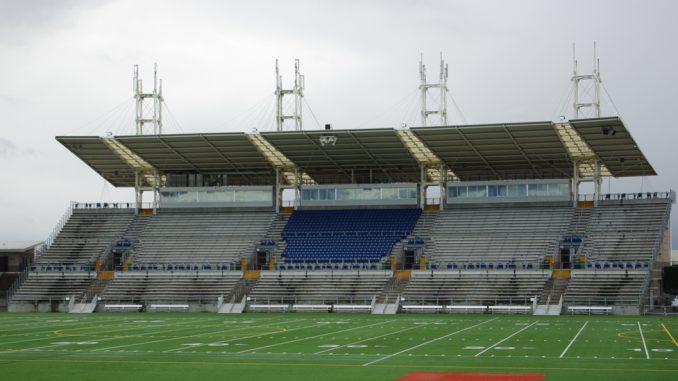
Imagine the power needs of Wembley Stadium, Murrayfield and the Principality Stadium being met by renewable energy generated by the water pipes of London, Edinburgh and Cardiff. It is a prospect that may not be too far into the future should a project in the United States prove successful.
The city of Hillsboro, Oregon is to use a new smart water and micro-hydro system to generate electricity from a pipeline running underneath the streets.
This power will then be used at Ron Tonkin Field baseball park and the multi-purpose Hillsboro Stadium, which form part of the city’s award-winning Gordon Faber Recreation Complex.
The technology is expected to generate enough electricity to power the lighting and concessions in both stadiums, as well as electrical vehicle charging stations across the complex.
Switching the stadiums to this new renewable source will save 162,000 pounds of carbon every year from entering the atmosphere. That is the equivalent to a car driving 240,000 miles.
In-pipe hydropower takes energy created during the process of managing water pressure in pipelines and turns it into a renewable, carbon free source of power.
The pressure in pipelines is controlled by valves, allowing water companies to deliver water safely to customers and to protect pipes from leaks and bursts caused by too much pressure. This in turn extends the life of the pipeline.
Normally, these control valves burn off excess pressure in the form of heat. In-pipe hydropower instead converts this released pressure into electricity which is fed directly into the energy grid. In Hillsboro, it will now keep the floodlights on and fans fed and watered at the city’s sports stadiums.
In-pipe hydropower has previously been deployed in large-scale pipelines. Hillsboro is the first time that micro-hydro will have been used to generate renewable energy from smaller water pipes.
A similar scheme was announced in Portugal back in August to turn drinking water into renewable energy as it passed through a treatment work’s pipe network.
Hillsboro Stadium has a capacity of 7,600 and plays host to American Football, softball, football and lacrosse for a wide variety of teams including those connected with Portland State University and the Portland Timbers Major League Soccer franchise. Ron Tonkin Field holds 4,500 and is the home of the Hillsboro Hops baseball team.
Although some way off the 90,000 who can cram into Wembley or the 73,931 who fit into the Principality, the project at the Gordon Faber Recreation Complex could provide a blueprint for stadiums to move towards carbon neutrality in the future.
Sports stadiums are not the only venues who could benefit from in-pipe hydropower – its use could be far more widespread, including for businesses, leisure facilities and even residential properties in the future. What happens in Hillsboro over the coming months will be worth keeping an eye on.

Leave a Reply